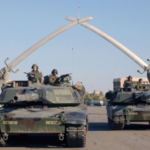Southwest Asia, more commonly referred to as the Middle East, is home to some of the most important rivers in civilization. The region, which extends from the Asian portion of Turkey in the west to Saudi Arabia and Yemen in the south to the Iran/Afghanistan border and Pakistan in the east and Armenia, Azerbaijan, and Turkmenistan in the north, offers a diverse range of modern and ancient sites.
The Euphrates River
The longest river in western Asia, the Euphrates begins in eastern Turkey and flows through Syria and Iraq before merging with the Tigris River and ending in the Persian Gulf. The 1,740-mile river, with the Tigris, formed Mesopotamia (“land between the rivers” in Greek) and gave birth to the Assyrian, Babylonian and Sumerian civilizations. More than one-third of the length of the Euphrates lies within Turkey, and a boat ride down this ancient waterway gives visitors a taste of what the landscape was like during the very beginning of civilization. Basra, at the Persian Gulf end of the river, has traditionally been a popular resort city, but the Iraq war has made this area less desirable for tourists.
The Tigris River
The eastern side of the “Cradle of Civilization” (with the Euphrates River), the Tigris River begins in the Taurus Mountains of Turkey, forms the border between Turkey and Syria, continues into Syria and flows through Iraq into the city of Baghdad before merging with the Euphrates and emptying into the Persian Gulf. As with the Euphrates, the Turkish portion of the Tigris River is more suitable for tourism. Among the sights along the river there is the ancient bridge just outside of the town of Diyarbakir.
The River Jordan
The River Jordan, which today forms the boundary between Israel and the Palestinian Territories, Syria and the Kingdom of Jordan, has been an important river since biblical times. The 156-mile river flows from Lake Hulah in northern Israel through the Sea of Galilee to the Dead Sea. Travelers can visit the Yardenit Baptismal Site at the south end of the Sea of Galilee where John the Baptist baptized Jesus. In Jordan, the chief attraction is the fertile and scenic Rift Valley, which extends from eastern Africa through Jordan and includes the Jordan River plateau.
The Aras River
The 666-mile Aras River forms in the Bingol Daglari Mountains of eastern Turkey. It continues on to form the Turkish-Armenian boundary, the Iran-Armenian boundary and the Iran-Azerbaijani boundary before merging with the Kura River and emptying into the Caspian Sea. Although the Aras River valley is somewhat less than hospitable to Western travelers, intrepid tourists will find several interesting sites. Among them is the ornate Baqcheh Jooq Palace, just outside of Maku on the Turkish-Irani border, a remnant of the Qajar Dynasty, which ruled the region from the 18th century to the early 20th century.
The Karun River
The Karun River is the only navigable river in Iran. This 515-mile waterway begins on Zard Kuh Mountain, part of the Bakhitiari mountain range in western Iran. The river then flows west and south through the Iranian provincial capital of Ahwaz before joining the waters of the Tigris and Euphrates rivers at the city of Khorramshahr and emptying into the Persian Gulf. Khorramshahr, site of a major battle in the Iran-Iraq war, has been rebuilt and is being developed by Iran as a tourist destination, according to FARS, Iran’s state news organization.
Although this region is considerably safer than it was just a few years ago, it is a good idea to check with the U.S. State Department before traveling for any travel warnings or advisories.





